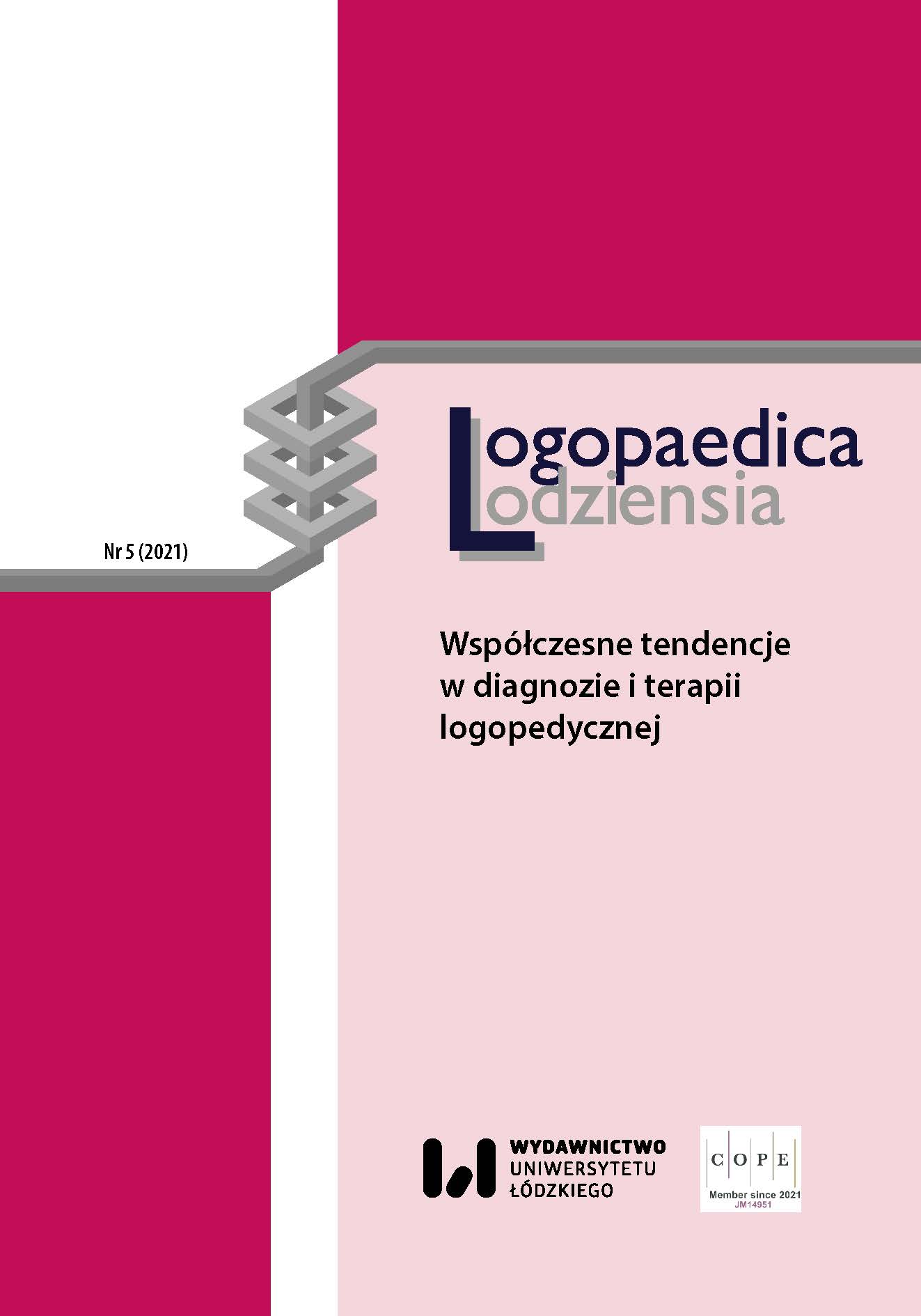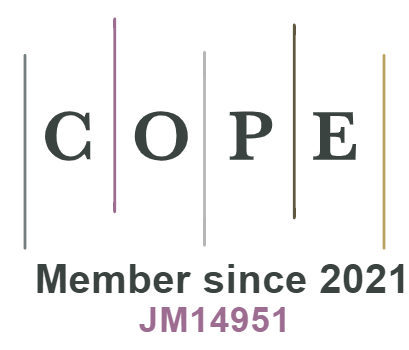Complex Communication Needs of a Child with Dandy-Walker Syndrome and Mucopolysaccharidosis Type II Case Study
DOI:
https://doi.org/10.18778/2544-7238.05.05Keywords:
complex communication needs, rare disease, Dandy-Walker syndrome, mucopolysaccharidosis type IIAbstract
There exist few publications describing the cases of children diagnosed with two rare diseases. Most of them are medical case studies. The purpose of the research was to describe the complex communication needs of a child and the resulting needs in the area of me as a person and in the home, social, educational, therapeutic and medical environment.
The research involved a boy in early school age diagnosed with the Dandy-Walker syndrome and mucopolysaccharidosis type II (Hunter syndrome). The research was embedded in qualitative orientation using an individual case study. The research was conducted over a period of four years (2016 to 2020).
The complex communication needs diagnosed in the boy triggered the following needs in the area of “me as a person”: to notice the effects of one’s actions, to have a sense of being a member of a group, to engage in activities that will help develop one’s own competencies and gain experience, and to be included in group activities. The research suggests that all of the above mentioned needs exist in the home and social environment area. In terms of education, it was determined that there is no need for a teaching assistant/aide who would know alternative methods of communication and could adapt the classroom to multimodal communication and train other persons. In terms of therapy, there was no need to create a controlled space in an institution, as therapy, the same as education, takes place in the boy’s home. In terms of medical care, Adam has all the above mentioned needs.
Downloads
References
Al-Turkistani H. K., 2014, Dandy-Walker syndrome, “Journal of Taibah University Medical Sciences”, vol. 9(3), pp. 209–212.
Google Scholar
DOI: https://doi.org/10.1016/j.jtumed.2014.01.005
Alpern C., 1992, Hunter’s Syndrome and Its Management in a Public School Setting, “Language, Speech, and Hearing Services in Schools”, vol. 23, pp. 102–106.
Google Scholar
DOI: https://doi.org/10.1044/0161-1461.2302.102
Amartino H., 2015, Hunter Syndrome (Mucopolysaccharidosis II) – The Signs and Symptoms a Neurologist Needs to Know, “European Neurological Review”, vol. 10(1), pp. 90–94.
Google Scholar
DOI: https://doi.org/10.17925/ENR.2015.10.01.90
Auvin S., Irwin J., Abi-Aad P., Battersby A., 2018, The Problem of Rarity: Estimation of Prevalence in Rare Disease, “Value in Health”, vol. 21(5), pp. 501–507.
Google Scholar
DOI: https://doi.org/10.1016/j.jval.2018.03.002
Department of Communities, Disability Services and Seniors, 2018, Complex communication needs, Brisbane: The State of Queensland.
Google Scholar
Frost L., 2002, The Picture Exchange Communication System, “Neurophysiology and Neurogenic Speech and Language Disorders”, vol. 12(2), pp. 13–15.
Google Scholar
DOI: https://doi.org/10.1044/nnsld12.2.13
Golec W., 2020, Zespół Dandy’ego i Walkera, [in:] A. Dobrzańska, Ł. Obrycki, P. Socha (eds.), Choroby rzadkie. Standardy medyczne, Warszawa: Media-Press, pp. 589–590.
Google Scholar
Grycman M., 2014, Porozumiewanie się z dziećmi ze złożonymi zaburzeniami komunikacji. Poradnik nie tylko dla rodziców, Kwidzyn: Stowarzyszenie Rehabilitacyjne Centrum Rozwoju Porozumiewania się.
Google Scholar
Haddadi K., Zare A., Asadian L., 2018, Dandy-Walker Syndrome: A Review of New Diagnosis and Management in Children, “Journal of Pediatrics Review”, vol. 6(2), pp. 47–52.
Google Scholar
DOI: https://doi.org/10.5812/jpr.63486
Hourcade J. P., Garzotto F., Rozga A., Tentori M., Markopoulos P., Pares N., Good J., Pain H., Alper M., 2014, Supporting Children with Complex Communication Needs, One of a CHInd, Toronto.
Google Scholar
DOI: https://doi.org/10.1145/2559206.2559229
Johnston S. S., Blue Ch., Gevarter C., Ivy S., Stegenga S., 2020, Opportunity Barriers and Promising Practices for Supporting Individuals with Complex Communication Needs, “Current Developmental Disorders Reports”, vol. 7, pp. 100–108.
Google Scholar
DOI: https://doi.org/10.1007/s40474-020-00195-w
Kumar R., Kumar Jain M., Kumar Chhabra D., 2001, Dandy-Walker syndrome: different modalities of treatment and outcome in 42 cases, “Child’s Nervous System”, vol. 17, pp. 348–352.
Google Scholar
DOI: https://doi.org/10.1007/s003810000425
Martin R., Beck M., Eng Ch., Giugliani R., Harmatz P., Munoz V., Muenzer J., 2008, Recognition and Diagnosis of Mucopolysaccharidosis II (Hunter Syndrome), “Pediatrics”, vol. 121(2), pp. e377–e386.
Google Scholar
DOI: https://doi.org/10.1542/peds.2007-1350
McNaughton D., Bryen D., Blackstone S., Williams M., Kennedy P., 2012, Young Adults with Complex Communication Needs: Research and Development in AAC for A “Diverse” Population, “Assistive Technology”, vol. 24(1), pp. 45–53.
Google Scholar
DOI: https://doi.org/10.1080/10400435.2011.648715
Nason B., 2014, The Autism Discussion Page on the Core Challenges of Autism, London: Jessica Kingsley Publishers.
Google Scholar
Nowak A., Kobylacka-Sikora K., 2017, Indywidualny Arkusz Kompetencji Komunikacyjnych. Komunikacja kluczem do integracji, Unia Europejska: Europejski Fundusz Społeczny.
Google Scholar
Parliament of Victoria Family and Community Development Committee, 2016, Inquiry into abuse in disability services. Final Report, Australia, Victoria, https://www.parliament.vic.gov.au/file_uploads/FCDC_-_Inquiry_into_abuse_in_disability_services_HtW37zgf.pdf (accessed: 22.10.2020).
Google Scholar
Pickl G., 2008, Children with complex communication needs. The parents’ perspective, Stockholm: Stockholm University.
Google Scholar
Pytrus T., Iwańczak B., Wawro J., Czartoryska B., Iwańczak F., 2006, Mucopolysaccharidosis II (Hunter Syndrome) – Case Report, “Advances in Clinical and Experimental Medicine”, vol. 15(2), pp. 399–403.
Google Scholar
Richter T., Nestler-Parr S., Babela R., Khan Z. M., Tesoro T., Molsen E., Hughes D. A., 2015, Rare Disease Terminology and Definitions – A Systematic Global Review: Report of the ISPOR Rare Disease Special Interest Group, “Value in Health”, vol. 18(6), pp. 906–914.
Google Scholar
DOI: https://doi.org/10.1016/j.jval.2015.05.008
Schieppati A., Henter J. I., Daina E., Aperia A., 2008, Why rare diseases are an important medical and social issue, “Essay Focus”, vol. 371(9629), pp. 2039–2041.
Google Scholar
DOI: https://doi.org/10.1016/S0140-6736(08)60872-7
Sigafoos J., Gevarter C., 2019, Introduction to he Special Issue: Communication Intervention for Individuals with Complex Communication Needs, “Behavior Modification”, vol. 43(6), pp. 767–773.
Google Scholar
DOI: https://doi.org/10.1177/0145445519868809
Wilson A., Gildersleeve-Neumann C. E., 2014, Functional Communication Parent Questionnaire, Unpublished instrument, Portland: Portland State University.
Google Scholar
Wraith J. E., Scarpa M., Beck M., Bodamer O. A., De Meirleir L., Guffon N., Lund A. M., Malm G., Van der Ploeg A. T., Zeman J., 2008, Mucopolysaccharidosis type II (Hunter syndrome): a clinical review and recommendations for treatment in the era of enzyme replacement therapy, “European Journal of Pediatrics”, vol. 167, pp. 267–277.
Google Scholar
DOI: https://doi.org/10.1007/s00431-007-0635-4
Downloads
Published
How to Cite
Issue
Section
License

This work is licensed under a Creative Commons Attribution-NonCommercial-NoDerivatives 4.0 International License.












